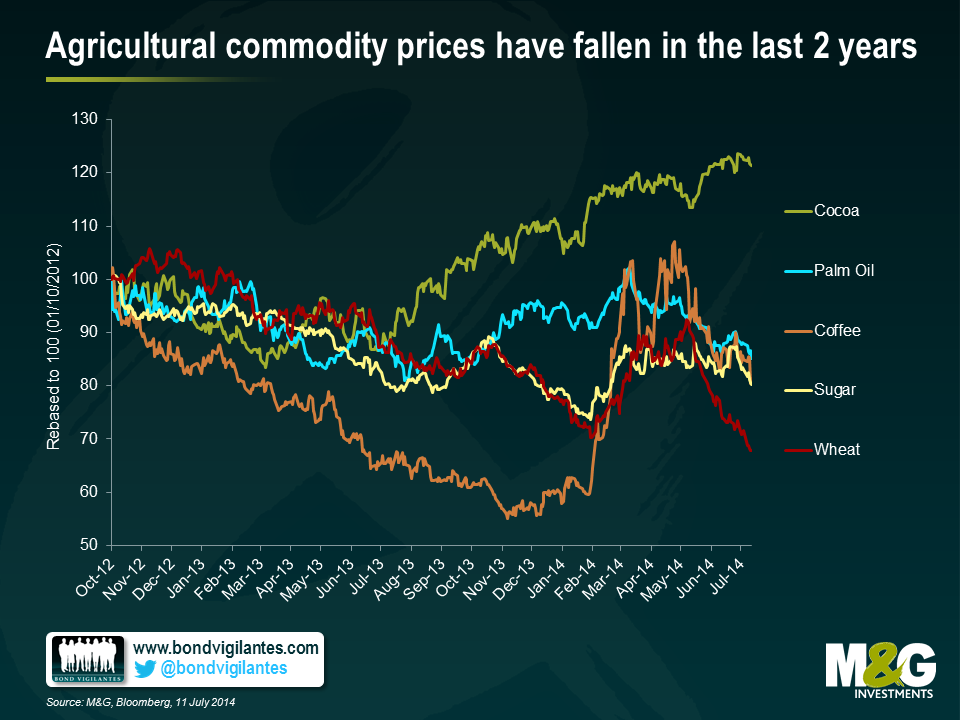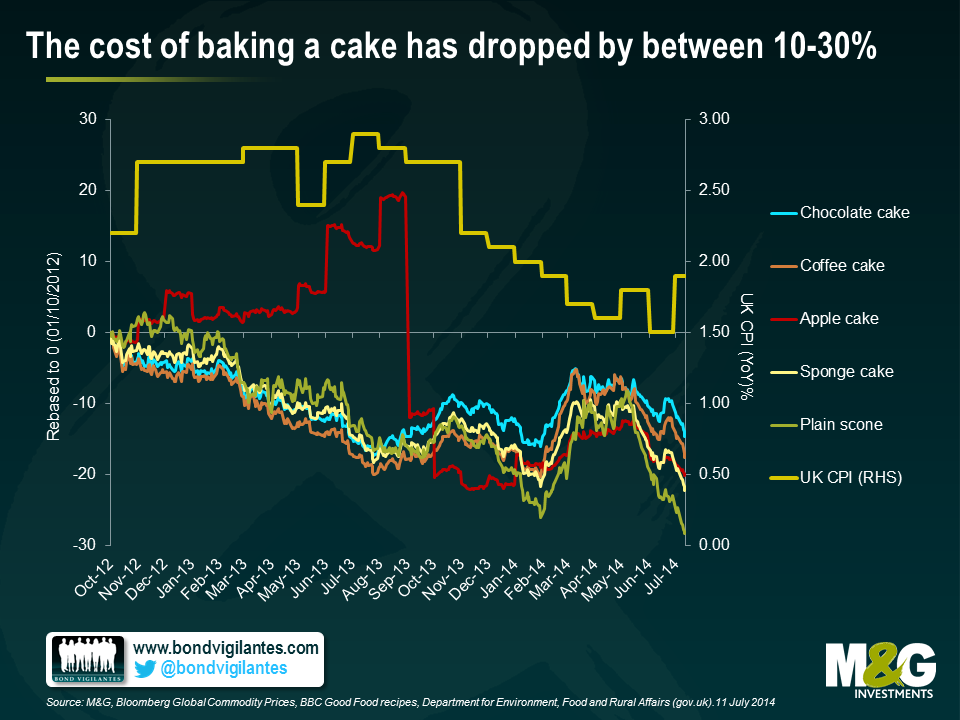Falling soft commodity prices are a piece of cake
Higher agricultural commodity prices at the start of the year raised concerns about the impact these could have on retail food prices, should the trend prove persistent. Fortunately, the price of soft commodities (coffee, sugar, wheat etc) appears to have decoupled from that of hard commodities (gold, silver, platinum etc) in recent months. Indeed, data from the last seven quarters indicate that the price of many agricultural commodities have actually fallen, as the chart below shows.
Coffee prices are now at a five month low, after fears of a shortage of coffee beans from Brazil have receded. The supply of sugar has increased year-on-year, while wheat prices have also fallen due to increased harvests and easing crop concerns.
In order to gauge the collective effect of these changing agricultural commodity prices and how they could potentially feed through into UK inflation, I have constructed a simple cake index, teaming up Global Commodity Price data with some basic recipes from the BBC Good Food website. Given that sponge and individual cakes are two of the representative items included in the CPI 2014 basket of goods – and that food and drink items make up 11.2% of the overall CPI index – combining the commodities in this way gives an indication of how future changes might affect the average consumer.
The graph below shows the results of the cake index, demonstrating the change in various cake costs (since October 2012) versus the UK CPI (yoy %). What’s interesting is the generally downward trend of all cake indices in the last seven quarters. Sponge cake and plain scones look particularly good value in recent months, owing to the high proportion of wheat in their recipes. Apple cake unsurprisingly provides a price signal for its key ingredient (the price of apples has fallen 4% YTD), while coffee cake gives a less pronounced but similar effect. The good news – particularly for lovers of chocolate cake – is that despite the persistent increase in the cost of cocoa, the price of other cake constituents such as sugar, wheat and palm oil (used as a proxy for butter) have all fallen sufficiently to offset this, bringing the price of chocolate cake lower in recent months.
Despite the recent June increase in CPI to 1.9% yoy, due to the lag between raw commodity prices and their general price level, we should perhaps expect to see deflation feeding into cake prices and the overall food constituent of CPI in the coming months. Therefore although it is unclear who exactly was the first to declare “let them eat cake!”, this person may have been on to something. Personally, I’d recommend the (relatively cheap) scones.
The value of investments will fluctuate, which will cause prices to fall as well as rise and you may not get back the original amount you invested. Past performance is not a guide to future performance.


18 years of comment
Discover historical blogs from our extensive archive with our Blast from the past feature. View the most popular blogs posted this month - 5, 10 or 15 years ago!


Bond Vigilantes
Get Bond Vigilantes updates straight to your inbox







